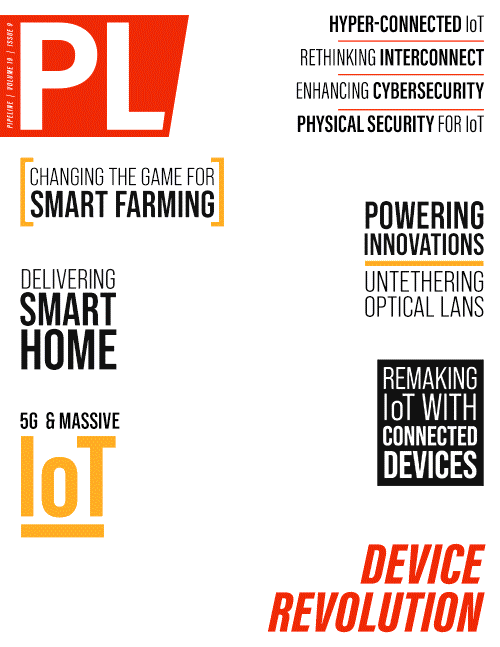How Connected Devices Will Remake IoT Systems
By: Ken Figueredo

When smart home rivals Apple, Amazon, Google, and IKEA agreed to collaborate on IoT technology, their decision signaled a structural change in market sentiment. In settling on the Matter protocol, they elevated a common interest in connecting multi-vendor smart home devices above proprietary and walled-garden strategies. A similar dynamic is playing out in the enterprise and industrial IoT sectors. Here, digital twins and predictive analytics are the key technology blocks around which consensus is forming. In both cases, the flow of IoT data from IoT devices and IoT platforms is fundamental.
While connected devices are critical sources for IoT data, their full value will come to the fore in interoperable IoT systems. Initially, interoperability applies to the ability to mix and match devices from multiple vendors, as in the case of the Matter protocol. In time, interoperability will apply to the sharing of data across operational and organizational boundaries. This is how the impact of relatively simple IoT devices will have far-reaching, ripple effects throughout the wider economy.
IoT systems, comprising multi-vendor devices, edge gateways, platforms, and business applications, will require greater intelligence in IoT devices. There will also be a greater premium on
systems engineering to capitalize on the coming generations of zero-energy sensors as well as new forms of data from joint communications and sensing in 6G systems.
Smart Home Industry Alignment
Roughly a decade ago, entrepreneurs and corporations turned their attention to the smart home market. Frustrated by water damage from a leak in his unoccupied house, one entrepreneur prototyped a monitoring system before launching a Kickstarter campaign to raise funds for the SmartThings startup. Following a $3million seed funding round, SmartThings launched a suite of home monitoring products and then Samsung acquired it in 2014. Around the same time, Deutsche Telekom launched its QIVICON smart home platform business unit, gathering an alliance of home equipment providers, in areas such as comfort, energy, and security. Its aim was to connect and combine controllable devices made by different manufacturers.
Over time, firms such as Amazon, Apple, and Google made niche entries into the smart home market, focusing on voice-activated control and programmable commands. None of these initiatives fully energized the market. The reason is that even though consumers had the choice of a growing range of home IoT devices, they remained constrained by single-provider systems. This also meant that they had to deal with the added complexity of managing multiple sub-systems to achieve a full smart home experience.
Responding to these impediments led rival providers to align behind the Matter protocol, a means of connecting home IoT devices regardless of manufacturer. This was an industry breakthrough. It aligned technology rivals while engaging organizations such as IKEA, which is associated more with furniture and household fixtures than IoT and communications technology. IKEA’s involvement and industry scale highlights the power of market demand to drive supply-side industry change.
Industrial IoT is Also Coming of Age
Market demand is beginning to exert a similar effect in the industrial sector now that IoT systems are commonplace in industrial scenarios. The change happened quickly, driven by the COVID pandemic and supply chain vulnerabilities. Business leaders are more receptive to IoT solutions now that they experience operational insights and better decision making thanks to easier access to the real-time data that IoT sensors and connected machines provide.
These developments are triggering new waves of innovation and value propositions. Artificial intelligence helps with decision-making; and machine learning is useful for pattern recognition. Together, they are making condition-monitoring and predictive maintenance applications much more automated and widespread. These techniques belong to the family of Digital Twin systems. Here, IoT data is fundamental to creating real-time, digital representations of machines and networks of interrelated devices. Among other possibilities, there are applications in transport networks and waste-handling systems for smart cities. There is more to come from the innovative uses of extended reality (XR) headsets. These allow technicians to interact and experience machinery repair procedures. Headsets and haptic sensors are other examples of IoT device innovations that are also fueling interest in the industrial metaverse.
As with the consumer and smart home market, solution providers are coming to terms with the need for interoperability. This has two dimensions. The first involves the ability to mix and match equipment and sensors from different suppliers. Following years of intense competition, for example, rival camps agreed to collaborate in the low-powered wide-area IoT device market. Specifically, Actility (a LoRaWAN service provider), and UnaBiz (a SIGFOX technology provider), agreed to integrate their platforms and ecosystems, unifying their low-power wide-area networking (LPWAN) solutions.



















